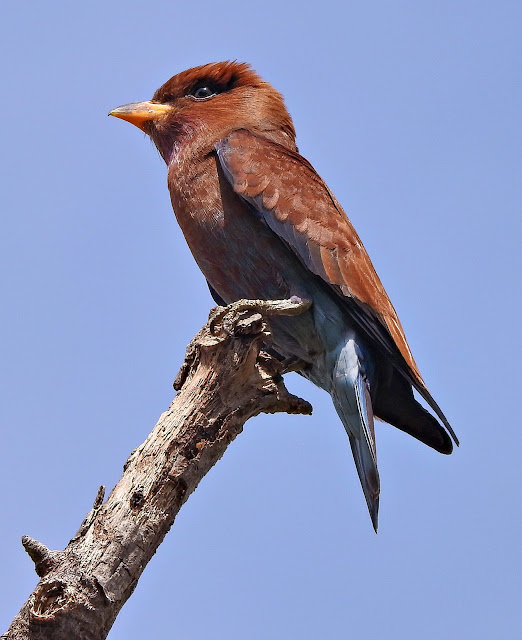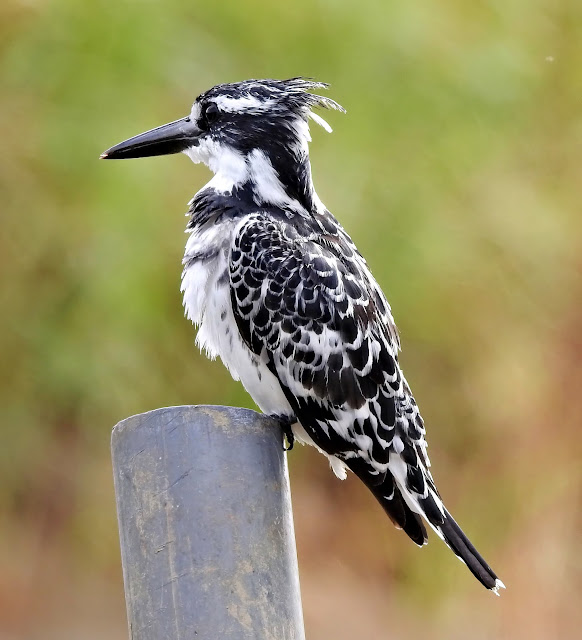The broad-billed roller (Eurystomus glaucurus) is a member of the roller family of birds which breeds across tropical Africa and Madagascar in all but the driest regions. It is a wet season breeder, which migrates from the northern and southern areas of its range towards the moister equatorial belt in the dry season.
The broad-billed roller is 29–30 cm in length. It has a warm back and head, lilac foreneck and breast, with the rest of the plumage mainly brown. The broad bill is bright yellow. Sexes are similar, but the juvenile is a drabber version of the adult, with a pale breast. The broad-billed roller is striking in its strong direct flight, with the brilliant blues of the wings and tail contrasting with the brown back. The call of the broad-billed roller is a snarling k-k-k-k-k-r-r-r-r-r sound.
This is a species of open woodland with some tall trees, preferably near water. These rollers often perch prominently on trees, posts or overhead wires, like giant shrikes.
They are inactive for most of the day, apart from chasing intruders, but in late afternoon they hunt for the swarming ants and termites on which they feed, sometimes in groups of 100 or more rollers. They drink like swallows, dipping their bills into water in flight.
This bird nests in an unlined hole in a tree cavity, laying 2-3 eggs.The Broad-billed Roller is monogamous unless its mate dies. In the event of a partner dying Eurystomus glaucurus will seek out a new mate
The nesting habit of Broad-billed Roller is to create the nest in a hole in a tree trunk. The bird lays eggs which are white in colour and number between 2 to 4
The preferred habitats for Broad-billed Roller are: forests and heavily treed regions
You will normally see the Broad-billed Roller by itself rather than in the company of birds of the same species.







































%201.jpg)
%202.jpg)








